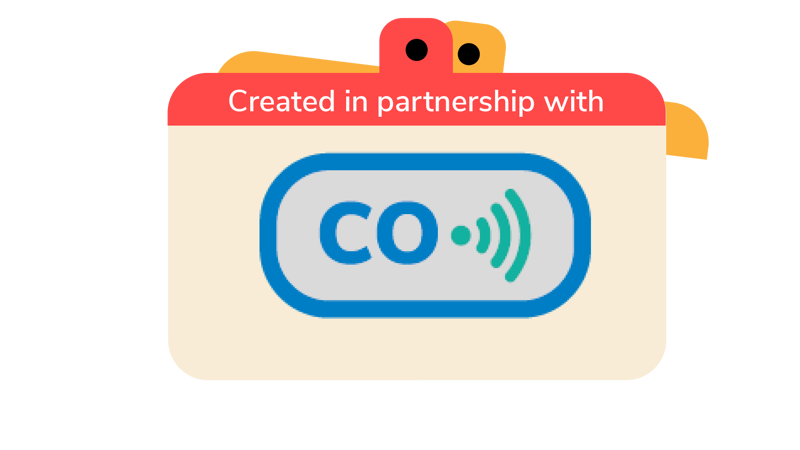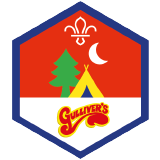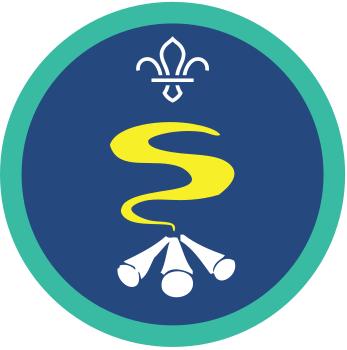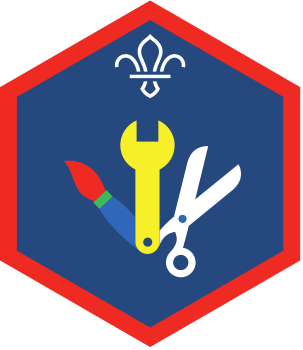
Dutch oven cake
You’ll need
- Dutch oven
- Hot embers and coals
- Ingredients for cake (see recipe)
- Tin foil
- Mixing bowl
- PPE (protective equipment), including heatproof gloves
- A bucket of water and/or sand
- Fire blanket
- First aid kit for burns
- Carbon monoxide alarm
Dutch ovens
Dutch ovens are usually made of seasoned cast iron. However, some Dutch ovens are instead made of cast aluminium, or ceramic. They’re often called casserole dishes in the UK.
They’ve thick walls and a tight-fitting lid. They’re great for cooking stews, sauces, soups, casseroles and braises.
Before you begin
- Use the safety checklist to help you plan and risk assess your activity. Additional help to carry out your risk assessment, including examples can be found here. Don’t forget to make sure all young people and adults involved in the activity know how to take part safely.
- Make sure you’ll have enough adult helpers. You may need some parents and carers to help if you’re short on helpers.
Getting ready to cook
- Make sure you have all the ingredients ready.
- Prepare and build your campfire. Our activities, Campfire admirers or Construct a campfire, can help you to do this.
- This recipe’s designed to be cooked in a Dutch Oven on top of hot coals.
- Remember to check your ingredients against any allergy or dietary requirements to ensure everyone can enjoy the cake. This may mean using alternative milks, flour, and spreads.
- You could do run our fire safety activities, Fuel air ignition and Sitting safely by a campfire, prior to running this session.
Be prepared
- Ensure that everyone’s fires have been built clear and open areas outdoors, with plenty of ventilation. If at a camp, this needs to be away from where people sleep.
- All the fires need to be allowed to burn down to hot embers before people can start cooking on them.
- Once the fire’s burned to hot embers and coals, it’s hot enough for you to cook your dish on.
- Have heatproof gloves available, as the entire surface area of the Dutch oven will be extremely hot.
Consider using this script to teach young people about carbon monoxide and how to keep themselves safe when burning fuel.
Does anyone know the three things we need to ignite or sustain a fire?
We need oxygen, a heat source (this can be a match, lighter, electricity or flint and steel) and fuel (this can be wood, gas, or solid fuel). This is known as the fire, or combustion triangle. When these three things come together, a chemical reaction happens and that is how we get fire.
What would happen if we removed the heat source from this triangle?
With just oxygen and fuel, nothing would happen.
What would happen if we removed the fuel from this triangle?
With just oxygen and a heat source, nothing would happen.
What would happen if we removed the oxygen from this triangle?
When there is not enough oxygen available for the fuel to burn fully when introduced to a heat source, carbon monoxide is released.
Does anyone know what carbon monoxide looks like?
It is actually colourless, odourless and tasteless – so we can’t sense it at all.
How do you know if you, or someone else might have carbon monoxide poisoning?
The symptoms of carbon monoxide poisoning might be confused with ‘flu-like’ symptoms. This could be headaches, dizziness, feeling weak, vomiting, chest pain, and confusion.
Safe or unsafe?
Gather everyone together and explain that you will be reading out statements. It is up to your young people to decide if the statements are safe or unsafe. They can do this by a show of hands, or marking areas on the floor for people to stand in. Make sure you play this away from any fires, in a safe area.
We have a carbon monoxide alarm, so we don’t need to worry about the risk of being poisoned.
UNSAFE - A Carbon Monoxide alarm detects the presence of the gas in the air, however should be used as an extra precaution in addition to making sure you are cooking in a well ventilated area.
The carbon monoxide alarm went off, signaling that it is present in the air. We turned off all the stoves and got everyone into some fresh air.
SAFE – If your alarm goes off, or someone starts to experience symptoms of carbon monoxide poisoning, get everyone into fresh
Dutch oven cake recipe
Ingredients:
- Cooking oil spray
- 250g plain flour
- 1tsp baking powder
- ½ teaspoon salt
- 3 tbsp caster sugar
- 170ml whole milk
- 2 medium eggs
- 2pbsp vegetable oil
- Spreads to swirl through, such as jam, chocolate spread, nut butters, marshmallow fluff or biscuit spreads
Making the cake
- Line the Dutch oven with tin foil and spray the foil with cooking oil.
- Place your spreads into heatproof containers, such as enamel mugs, or a small billie. Using heatproof gloves, place them into the embers to warm up.
- Mix the flour, baking powder, salt and sugar together in the mixing bowl.
- Make a well (a small hole) in the centre of the mix using the back of your spoon.
- Add the milk, eggs and oil into the well. Whisk everything together until you’ve a thick batter. You could substitute this step by using a shop bought mix instead. Make sure it creates the same amount of batter as stated here, which is about 540g.
- Using heatproof gloves, carefully take your spreads off the embers.
- Pour the batter into the foil lined Dutch oven and spread it out evenly.
- Take dollops of your warmed up spreads and spoon them on top of the batter. With the end of a spoon, swirl the dollops together into the mixture slightly to create a marbled effect.
- Put the lid on the Dutch over.
- Using heatproof gloves, an adult should place around 15 coals on top of the lid.
- Leave to cook for around 15-20 minutes. You can see if it's done by sticking a skewer into the cake - if it comes out clean, it’s done!
- While waiting, you could play a game, such as Duck Duck Goose, Scattergories or Splat.
- Using the heatproof gloves, remove the cake. Wait for it to cool down and an adult volunteer can serve it for everyone to try.
Reflection
A campfire isn’t just for cooking. People have always made fires to ward off predators, keep us warm, illuminate an area and attract attention.
Now that we have electric and gas stoves that we can take on camp, why might we still need a campfire? Is it just the novelty of sharing something with the rest of the group, or is it the social aspect of having somewhere communal to sit with your fellow campers?
How did it feel working in groups around the fires, performing your roles and combining your skills to complete the tasks?
Everyone needed to be responsible and safe around the fire. There are lots of risks and hazards that we must be mindful of when enjoying our fire and using it for cooking.
Can anyone spot the different ways we have tried to keep everyone safe? Has anyone heard of carbon monoxide? What have we done today to make sure we don't suffer from carbon monoxide exposure?
Safety
All activities must be safely managed. You must complete a thorough risk assessment and take appropriate steps to reduce risk. Use the safety checklist to help you plan and risk assess your activity. Always get approval for the activity, and have suitable supervision and an InTouch process.
- Cooking
Teach young people how to use cooking equipment safely. Supervise them appropriately throughout. Make sure it’s safe to use and follow manufacturers’ guidelines for use.
- Fires and stoves
Make sure anyone using fires and stoves is doing so safely. Check that the equipment and area are suitable and have plenty of ventilation. Follow the gas safety guidance. Have a safe way to extinguish the fire in an emergency.
- Food
Remember to check for allergies, eating problems, fasting or dietary requirements and adjust the recipe as needed. Make sure you’ve suitable areas for storing and preparing food and avoid cross contamination of different foods. Take a look at our guidance on food safety and hygiene.
- Flammable items
Always take care when using flammable items, especially if you’re near fire. Always follow the manufacturer’s instructions and guidelines.
- Visits away from your meeting place
Complete a thorough risk assessment and include hazards, such as roads, woodland, plants, animals, and bodies of water (for example, rivers, ponds, lakes, and seas). You’ll probably need more adult helpers than usual. Your risk assessment should include how many adults you need. The young people to adult ratios are a minimum requirement. When you do your risk assessment, you might decide that you need more adults than the ratio specifies. Think about extra equipment that you may need to take with you, such as high visibility clothing, a first aid kit, water, and waterproofs. Throughout the activity, watch out for changes in the weather and do regular headcounts.
You may want to mix your sponge batter together in advance of running this activity.
To decrease the level of the challenge, you may want to build the fires for your young people in advance.
You may want to increase the level of the challenge by providing the tools and instructions for this recipe. Then allow young people to work out how to successfully cook their cake.
Remember to check your ingredients against any allergy or dietary requirements to ensure everyone can enjoy the cake. This may mean using alternative milks, flour, and spreads.
All Scout activities should be inclusive and accessible.
If you enjoyed building your own campfire, why not try making your own firelighters too in Fire builders?
You could consider running this as part of a full dinner cooked over a campfire. We’ve lots more recipes to inspire you.
Everyone was reminded of the dangers of carbon monoxide poisoning at the start of this activity. You could consider combining this with some other activities on carbon monoxide safety.
Allow your young people to choose what kind of cake they want to cook. Make sure your young people are given appropriate space to learn how to cook using a Dutch oven.





